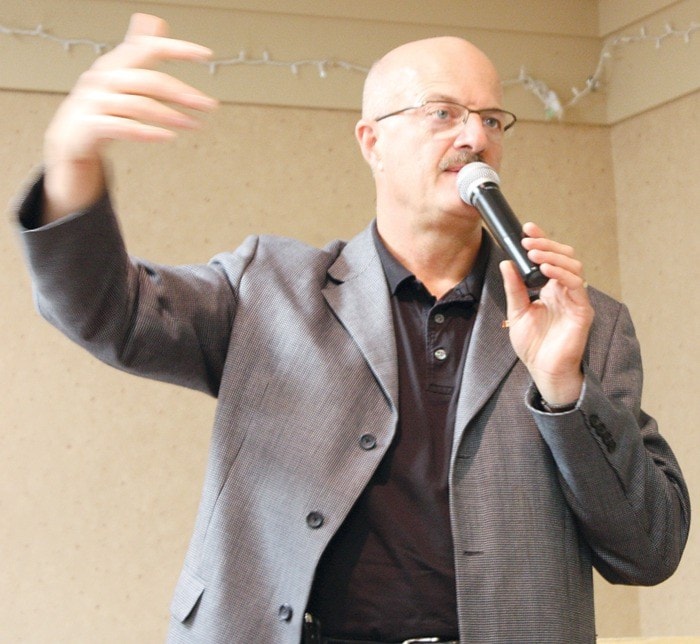Campbell River may be a pilot community for the B.C. government’s new initiative to generate more jobs.
Minister Pat Bell launched his province-wide tour, to promote Premier Christy Clark’s BC Jobs Action Plan, in Campbell River Friday at the Coast Discovery Inn.
“I’ve spent lots of time in Campbell River and for me, Campbell River was a very logical place to start the tour,” said Bell, Minister of Jobs, Tourism and Innovation.
He said it also would make a lot of sense to designate Campbell River as one of three test communities. If Campbell River was chosen, the province would consult with stakeholders at the local level to identify key sectors to focus on and create job opportunities. It would then take the experiences from the pilot communities and apply them in other municipalities.
Coun. Claire Moglove asked Bell to confirm if Campbell River will be a pilot.
“I have a soft spot to say yes to that but I have to confirm with my ministry,” Bell said. “But Campbell River certainly fits.”
Bell said the jobs plan, which was released in September, is all about identifying the opportunities that exist within a community and capitalizing on them.
He identified mining, Agri-Foods, technology, tourism, international education and forestry as possible key sectors for Campbell River.
“There’s already about 300 international students at North Island College and there’s a great opportunity to grow that,” said Bell, who also noted the forestry sector is on the rebound. “Arguably, we’ve seen the best results in forestry in years. I would not have believed we’d achieve the level of success we have in forestry.”
Mayor Charlie Cornfield said the city is already on the right track in identifying its strengths. The city has conducted several plans and studies including an agriculture plan, transportation plan, and an energy and emissions plan.
At the Immigrant Welcome Centre, there are strategies in place to attract international students.
“We are ready, look at all the plans and studies we’ve done – we have all this information that’s out there, we’re ready to go,” Cornfield said. “We really encourage you to make us that pilot project. We’ve got the people, we’ve got the data and we’re ready to go, ready to git er done.”
Bell said the policies outlined in the new jobs plan will help Campbell River.
The key initiatives include adding more staff to deal with the backlog of permit applications, opening up a new major investments office to move large projects through in a more timely fashion, harmonizing the provincial and federal Environmental Assessment process and taking a different approach to dealing with First Nations.
John Henderson, Campbell River Indian Band councillor, said First Nations have been marginalized and left out of the work force.
“First Nations need to be at the table in all sectors,” Henderson said. “We need to talk about how to build the economy together, that’s what we need to talk about here – how to make the province survive.
“How to make First Nations survive. I hope the next steps we take are real jobs.”
North Island MLA Claire Trevena was also critical of the plan and said it does not address the needs of Vancouver Island.
“There is no value added in this jobs plan and that is what is very damaging for the North Island,” Trevena said after the jobs plan was first unveiled. “Having value added is what makes a community.”
Trevena also questions whether there will really be any new jobs created in Campbell River.
“Having targets is very important but you’ve got to make sure that you have the jobs,” she said.
The plan projects that the Vancouver Island/Coast region can expect 152,600 job openings in the next 10 years. It also sets targets of having B.C. among the top two provinces in Gross Domestic Product (GDP) growth by 2015 and among the top two provinces in new job growth within the same time period.
